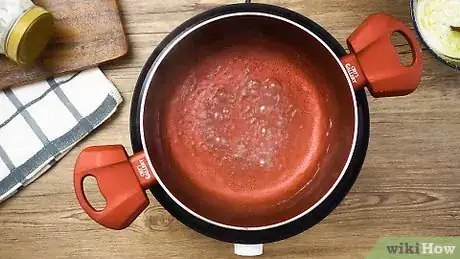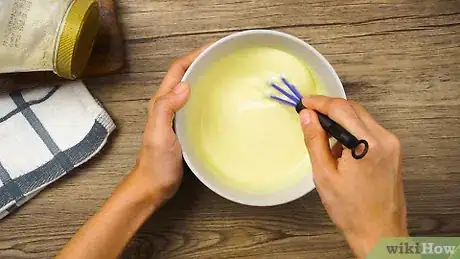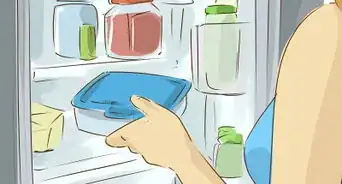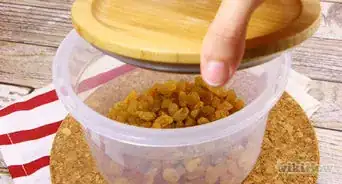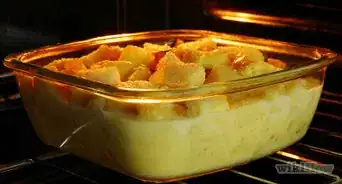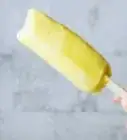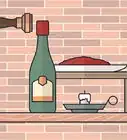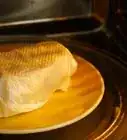This article was co-authored by wikiHow staff writer, Hannah Madden. Hannah Madden is a writer, editor, and artist currently living in Portland, Oregon. In 2018, she graduated from Portland State University with a B.S. in Environmental Studies. Hannah enjoys writing articles about conservation, sustainability, and eco-friendly products. When she isn’t writing, you can find Hannah working on hand embroidery projects and listening to music.
The wikiHow Video Team also followed the article's instructions and verified that they work.
This article has been viewed 13,089 times.
Learn more...
Homemade mayonnaise tastes great, especially when you throw in a hint of lemon juice or mustard. However, mayonnaise gets separated, or broken, easily. If your mayonnaise looks too yellow or lumpy like cottage cheese, don’t worry! You can fix it by using a few ingredients from your kitchen to get smooth, light mayonnaise for you and your family to enjoy.
Steps
Whisking in Water
-
1Boil 1 cup (240 mL) of water on the stove. You can use normal tap water from your sink. Fill a pot up with a little bit of water and bring it to a boil on high heat.[1]
- Boiling water will recombine the ingredients and make them more creamy than room temperature water.
-
2Add 1 tablespoon (15 mL) of boiling water to your mayonnaise. When recombining your ingredients, it’s important to start slow. Put in a little bit of water to start the process, and use caution as you transfer the hot water to your mayonnaise.[2]
Warning: Adding water to your mayonnaise may thin it out, which makes it great for salad dressings but not so great for burgers or sandwiches.
Advertisement -
3Whisk the water into the mayonnaise slowly. Carefully place your whisk in the center of the mayonnaise. Slowly starting whisking in a circular motion, picking up speed as the water combines with the mayonnaise.[3]
- When recombining mayonnaise, going slow is the name of the game. If you whisk too quickly, you could end up separating your mayonnaise even more.
-
4Add water in 1 US tbsp (15 mL) increments. If your mayonnaise still looks like cottage cheese, add a little bit more water in 1 US tbsp (15 mL) at a time. The more water you add, the thinner your mayonnaise will get.[4]
- Although your mayonnaise may thin out, it will also get creamier from being whisked.
-
5Sprinkle in more seasoning if your mayonnaise got watered down. Once your mayonnaise has recombined, give it a taste to see if the water thinned out the flavor too much. If you need to, add in 1 teaspoon (4.9 mL) of mustard or lemon juice to give it a richer taste.[5]
- Adding mustard may also help to thicken up the mayonnaise a little bit if it got too thin.
Adding an Egg Yolk
-
1Crack 1 egg yolk into a clean bowl. Crack open an egg and gently pour the egg yolk back and forth between the halves of the shell to separate the yolk. Make sure you crack just the yolk into a bowl, not the egg whites.[6]
Warning: Using an egg yolk may thicken your mayonnaise. It’ll be great for sandwiches, but not so good for salad dressing.
-
2Pour 1 tablespoon (15 mL) of mayonnaise into the bowl. Hold your bowl of mayonnaise over the bowl with the egg yolk in it and drop about 1 tablespoon (15 mL) onto the yolk. You don’t have to be super precise, but try not to pour a bunch of mayonnaise into the egg all at once.[7]
- Going slowly will ensure that your ingredients stick together and don’t end up separating all over again.
-
3Whisk the mayonnaise and the egg together slowly. Hold your whisk over the egg yolk and the mayonnaise and start moving it slowly in a circle. The slower you go the better so that the ingredients can mesh back together.[8]
-
4Add the rest of your mayonnaise in 1 US tbsp (15 mL) increments. Keep adding in mayonnaise 1 small dollop at a time. The slower you add in your mayonnaise and whisk, the better your ingredients will recombine.[9]
- If you’re having a hard time pouring your mayonnaise, try putting it in a measuring cup with a spout to make it easier.
-
5Keep whisking for 2 to 3 minutes. After that, your mayonnaise should look smooth and creamy again. You can taste the mayonnaise to see if you need to add in any extra mustard or lemon juice to make it taste great.[10]
- You’ll know your mayonnaise has recombined when it looks smoother and lighter in color.
Things You’ll Need
Whisking in Water
- Tablespoon
- Whisk
- Bowl
Adding an Egg Yolk
- Bowl
- Whisk
References
- ↑ https://foodal.com/knowledge/how-to/quick-fixes-broken-homemade-mayo/
- ↑ https://www.thekitchn.com/homemade-mayonnaise-separated-140473
- ↑ https://foodal.com/knowledge/how-to/quick-fixes-broken-homemade-mayo/
- ↑ https://www.thekitchn.com/homemade-mayonnaise-separated-140473
- ↑ https://www.thekitchn.com/homemade-mayonnaise-separated-140473
- ↑ https://foodal.com/knowledge/how-to/quick-fixes-broken-homemade-mayo/
- ↑ https://latimesblogs.latimes.com/dailydish/2012/03/test-kitchen-tips-fixing-broken-mayonnaise.html
- ↑ https://latimesblogs.latimes.com/dailydish/2012/03/test-kitchen-tips-fixing-broken-mayonnaise.html
- ↑ https://latimesblogs.latimes.com/dailydish/2012/03/test-kitchen-tips-fixing-broken-mayonnaise.html
